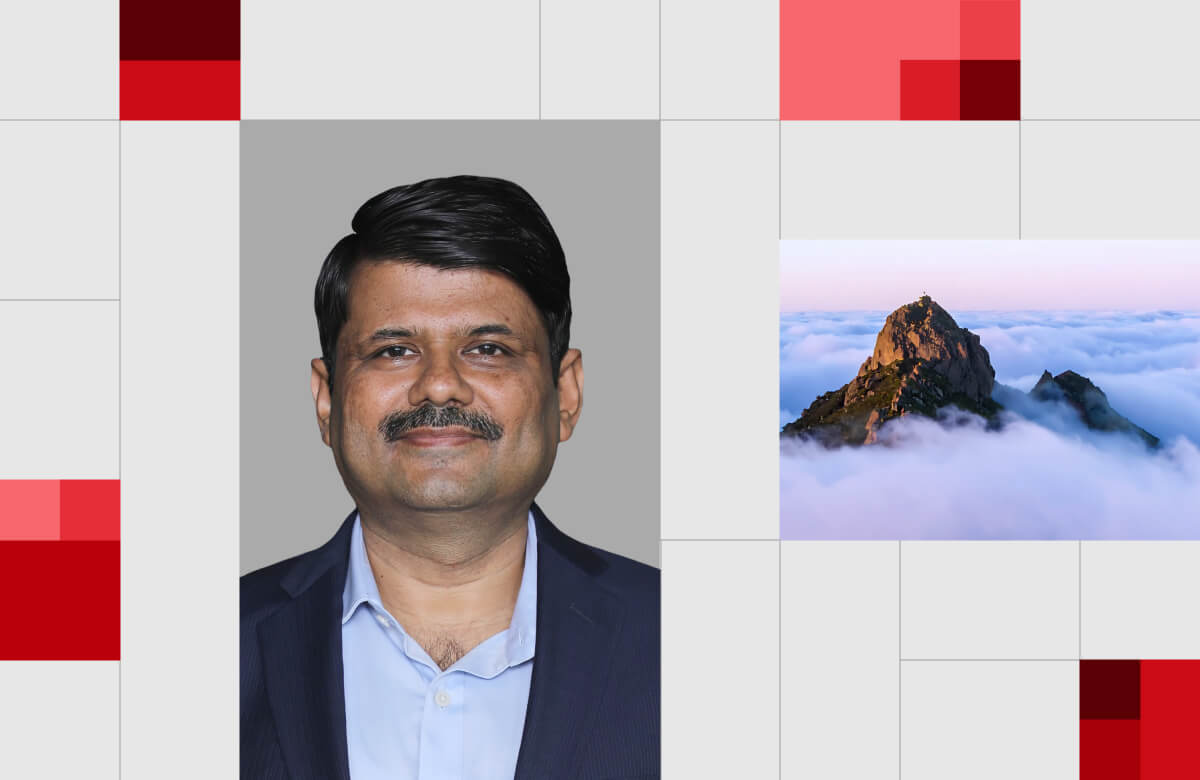Hello,
This week, Sweden’s EQT confirmed it has raised $11.4 bn so far for its latest Asia fund, spotlighting India as a key driver of regional allocation. The firm joins a growing list of global GPs doubling down on India amid a worldwide slowdown.
Also, Titan (a Tata Group company) is acquiring a majority stake in Dubai-based jeweller Damas for over AED 1 bn, furthering its international ambitions. The deal strengthens the legacy watchmaker’s footprint across the GCC and marks one of its largest cross-border moves.
Meanwhile, JSW Paints has sought CCI approval to acquire a 74-76% stake in Akzo Nobel India, a move that could make it the country’s fourth-largest paints player.
And finally, Adani Group will fully exit Adani Wilmar’s agri business in a $1.3 bn move. The strategic divestment reflects the conglomerate’s sharper focus on core infrastructure plays, and signals portfolio reshaping post-debt scrutiny.
I hope you enjoy this week’s roundup, and please do connect with me on LinkedIn to find out how I can help with your next M&A deal.
Let’s dive in.

Deal Tracker
Our weekly roundup of confirmed M&A deals in India.
Market Trends
Late shoots and exits: Are continuation funds a loophole?
Once whispered about like a four-letter word among institutional investors, they’ve now gone mainstream. So much so, today, 14% of all PE exits are via continuation funds.
Originally conceived as LP-led liquidity solutions, enabling limited partners to sell out of their illiquid PE positions, we’re now seeing more and more GP-led secondaries.
Their key innovation? Giving GPs a way to hold onto their best assets longer for more upside, while providing LPs with an option to cash out.
What’s causing the uptick?
India’s continuation fund market is in its infancy. Samara Capital kicked things off in 2021 by rolling over its stake in Sapphire Foods (QSR). Leading PE player ChrysCapital followed in 2023 and midsize-focused Multiples tested the waters in 2024, but these moves are rare.
They, however, reflect:
- Liquidity mismatches: Domestic institutional capital is still maturing; exits can be tricky even for winners.
- Better-performing portfolios: Holding on makes more sense if you’re sitting on a compounding asset.
- Global LP familiarity: Indian GPs now have the opportunity to work with LPs experienced with these structures elsewhere.
- Rising upside: Some assets are just too good to exit but regulatory constraints might force you to.
We can also observe several factors driving a greater sense of urgency:
- Global regulations. Pension and insurance capital is under pressure to rotate out of decade-old funds.
- Rebalancing. Some LPs think they may keel over — and must trim exposure to older vintages, or want sectoral or geographic reallocation.
- Dry powder ($200bn). That’s the amount secondary buyers are sitting on today, up 15x in a decade.
- Not just lemons. This isn’t a distressed-only strategy anymore. Sometimes, GPs want to hold a compounder.
How GPs use continuation funds
Like renewing vows, you liked the company enough to marry it once, and the market hasn’t changed your mind. Deals are available in the following flavours: roll half the portfolio forward; carve out one trophy asset; let in a new GP to take over, crystallise carry (proof that your money is where your mouth is) or the ‘super carry’ deals (GPs double down on performance incentives).
But one can clash with original LP expectations and BPMs (business plan metrics).
Are LPs happy?
Once considered ‘zombie funds’, continuation vehicles are no longer taboo. And LPs are becoming more accepting while LP advisory committees are now becoming thought partners.
The questions LPs might ask:
- Is this just to delay an exit?
- Is there truly more upside?
- Is this asset being overvalued?
- Does the management have skin in the game (esp. as in India where governance risks linger)?
What next?
Globally, middle-market PE firms are struggling to raise fresh capital, so rolling the winners forward can seem an attractive solution. Indian investors are tuned into the potential benefits, while differences with developed markets remain:
- The Indian LP base is thinner and deals rely on global secondaries buyers.
- Regulatory clarity is, so far, limited (it’s early days).
- India still lacks the institutionalised ‘special situations’ fund market of the likes of the US or UK.
As sponsors recalibrate their exit strategies, continuation tools are becoming more recognised as a means to hold on to winners, lock in value, and build consensus with LPs.

The rumour mill
- HDFC merger continues to remain a drag on bank credit growth
- China electronics entry may hinge on tech transfer JVs with Indian firms
- Schneider said to be in talks to buy Temasek’s stake in Indian JV Schneider Electric
- Yamna Signs MoU with Government of Andhra Pradesh in India to Develop Large-Scale Green Hydrogen and Ammonia Project
- Saudi PIF Seeks CCI Nod for Olam Agri Stake
- JSW Paints seeks CCI nod to acquire majority stake in Akzo Nobel India for ₹12,9
- Adani Group’s Strategic Divestment from AWL Agri Business and Its Implications for Core Infrastructure Growth
- Torrent Pharmaceuticals to Consider Debenture/Bond Issuance Amid KKR Sale of JB Chemicals Stake.
- EQT hails Asia, India opportunity as it collects $11.4bn so far for latest PE fund targeting region
- Torrent Pharma seeks CCI nod for ₹19,500 cr majority stake in JB Chemicals
- No let-up in India’s private market boom as investors continue to shun China
- Arpwood Partners eyes stake in teleradiology firm
- FMO proposes $50m more investment in India’s SK Finance
- India investigates Walmart’s Myntra for breaching foreign investment rules
- India’s markets regulator allows Jane Street to resume trading: report
- Global PE firms queue up for Nash Industries’ potential equity round
- Omnicom’s acquisition of IPG gets green light in 14/18 markets
- Allianz Forms Reinsurance Joint Venture in India
- India’s Titan to acquire majority stake in Dubai’s Damas for over Dh1 billion
- SBI on mega fundraising drive: To raise ₹45,000 cr in debt, equity in FY26
- Natco Pharma shares to be in focus on Thursday after ₹2,000 crore acquisition move. Details here
- Inox Wind to raise Rs 12.5 billion through rights issues of shares
- From legacy to liquidity: Why private equity firms are courting India’s family businesses
- IDBI Bank Shares Jump Nearly 5% After Disinvestment Said To Be In Final Phase
- India’s Adani to exit Wilmar in $1.3bn deal
- India’s E-commerce Crackdown Targets Walmart’s Myntra
- Accenture Song–WPP merger rumors fuel industry speculation
- Who Is Anand Jain? Meet Mukesh Ambani’s Best Friend And Real Estate Tycoon Behind Dream11’s Success
M&A news
- NCLT approves merger of Adani Cementation with Ambuja Cements
- Equity analysts in India top global peers in long short model
- India court blocks Allied Blenders and Distillers from launching recently acquired brands
- In nine years, IBC helps resolve over Rs 26 lakh crore of debt — directly or indirectly
- Shakti Bhog Snacks CIRP: NCLT says IBC cannot be used to sidestep legitimate process of law
- Private equity fund Apax Global Alpha soars on £794m bid to take itself private
- Difficult to project FY26 disinvestment mop-up at the moment: MoS for finance
- Navigating the Nuances of Cross-Border M&A: A Conversation with Anshuman Yadav
- ETMarkets Smart Talk | FPI flows inconsistent as India’s valuation premium hits 80% over MSCI EM: Anuj Kapoor
- Rate cuts by RBI not magic bullet to propel investments: Raghuram Rajan
- India’s 283bn IT sector faces uncertainty due to US tariffs
- Wipro shares rise as Indian IT firms quarterly results top estimates
- India deals barometer report 2025: Big-ticket deals drive 40% surge in June funding
- Anuj Kapoor: FPI flows inconsistent as India’s valuation premium hits 80% over MSCI EM
- India’s SBI raises $2.9b via share sale to institutional investors
- India’s leading plastics product manufacturer to acquire Wavin’s Indian Piping Business for Rs 310 crore by July 31, 2025
- Awards for Excellence country/territory winners 2025: India’s best investment bank for DCM – Trust Investment Advisors Private
- Aurum PropTech acquires REA India’s PropTiger in strategic share-swap deal
- GP Stakes News interview with Anthony Maniscalco on Investcorp SCG’s Team Expansion and Partnerships
- Daily news wrap-up: Corporate Solar funding declines 39% yoy in 1h 2025
- India a ‘standout investment destination’ amid global volatility: KKR
- Titan Share Price Gains After Acquisition of 67% Stake in UAE’s Damas Jewellery
- Kotak Bank CEO tops private banker salaries with ₹13cr payout
- The Theobroma Takeover: What ₹2,410 Cr Deal Means for India’s Booming Dining & Cafe Sector?
- Carlyle Group: A Fortress of Diversification and Dry Powder in the Evolving Private Markets Landscape
- PE targets stakes in hospital sector: 5 deals
- India insight: 11 of the most active international buyers
- IDFC First Bank In Spotlight: RBI Approves Warburg Pincus’ 9.99% Stake Acquisition
- Indian rupee to track dollar recovery bond market focused on rate cut bets
- A. O. Smith Set to Report Q2 Earnings: Is a Beat in Store?
Job moves
- F&M Bank announces leadership transition as board chairman steps down
- Bajaj Finance MD Anup Saha resigns; Rajeev Jain returns to role
- Stephane Deblaise appointed as CEO of Renault Group in India
- New GP stakes firm Pact Capital hires Jemma Wolfe from Goldman Sachs
- Omnicom-ipg-fast-track-merger-with-dedicated-teams
- Who is Neeraj Gambhir? Meet the new Axis Bank Executive Director after surprise leadership shuffle
- Why the serial CEO has fallen out of fashion
- Microsoft nabs 24 DeepMind AI experts, Amar Subramanya is new AI VP
- ESR reshuffles exec team amidst privatisation move
- Eddid Financial Appointed as Participating Dealer for Pando Bitcoin ETF (2818.HK)
IPOs
- Big Cheques for Late-Stage Start-Ups Dry Up with 25% Drop in Deal Sizes; IPOs Take Centre Stage
- India’s Brigade Hotel Ventures aims for $397m valuation i trimmed down IPO
- India’s top think tank recommends easing investment rules for Chinese firms
- Indian dairy product firm Milky Mist files draft papers for $236m IPO
- Former Nexus MD Sameer Brij Verma’s solo fund northpoint raises $150m: Report
- Indian furniture brand WoodenStreet weighs IPO, aims to quadruple revenue in 3years
- Hotel Siraichuli to issue IPO, Nabil Investment Banking as sales manager
Fundraising
Compliance/regulatory update
- Appointment of Foreign Nationals as Company Directors in India: A Legal Checklist
- Malhotra’s surprise rate cut sparks big expectations, but RBI’s limits are showing
- CCI Re-Affirms its Strict Standard in Green Channel Merger
- Par Panel for Tax Exemptions on Anonymous Donations to NPOs, TDS Refund Without Penalty
 Harsh Batra
Harsh Batra

